
The United States Indo-Pacific Command (USINDOPACOM) is the unified combatant command of the United States Armed Forces responsible for the Indo-Pacific region.
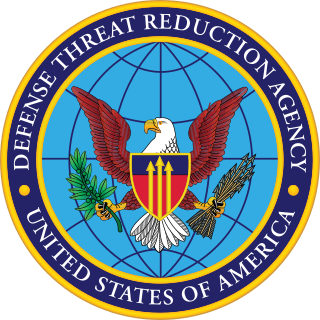
The Defense Threat Reduction Agency (DTRA) is both a defense agency and a combat support agency within the United States Department of Defense (DoD) for countering weapons of mass destruction and supporting the nuclear enterprise. According to the agency's website, its mission states that "DTRA provides cross-cutting solutions to enable the Department of Defense, the United States Government, and international partners to Deter strategic attack against the United States and its allies; Prevent, reduce, and counter WMD and emerging threats; and Prevail against WMD-armed adversaries in crisis and conflict." The agency is headquartered in Fort Belvoir, Virginia.
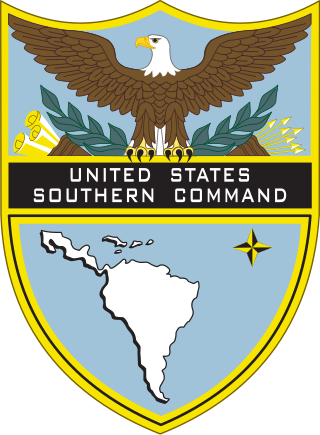
The United States Southern Command (USSOUTHCOM), located in Doral, Florida in Greater Miami, is one of the eleven unified combatant commands in the United States Department of Defense. It is responsible for providing contingency planning, operations, and security cooperation for Central and South America, the Caribbean, their territorial waters, and for the force protection of U.S. military resources at these locations. USSOUTHCOM is also responsible for ensuring the defense of the Panama Canal and the canal area.

NetOps is defined as the operational framework consisting of three essential tasks, Situational Awareness (SA), and Command & Control (C2) that the Commander (CDR) of US Strategic Command (USSTRATCOM), in coordination with DoD and Global NetOps Community, employs to operate, manage and defend the Global Information Grid (GIG) to ensure information superiority for the United States.
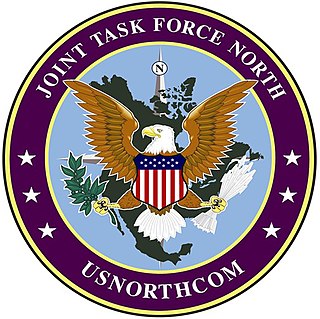
Joint Task Force North (JTF North), formerly Joint Task Force Six (JTF-6), is a multi-service operation by the United States Department of Defense for counterdrug and anti-terrorist operations. JTF-North is headquartered at Biggs Army Airfield, Fort Bliss, Texas. United States Northern Command is the controlling Unified Combatant Command.

In the U.S., critical infrastructure protection (CIP) is a concept that relates to the preparedness and response to serious incidents that involve the critical infrastructure of a region or the nation. The American Presidential directive PDD-63 of May 1998 set up a national program of "Critical Infrastructure Protection". In 2014 the NIST Cybersecurity Framework was published after further presidential directives.

The Organized Crime Drug Enforcement Task Force (OCDETF) is a federal drug enforcement program in the United States, overseen by the Attorney General and the Department of Justice. The principal mission of the OCDETF program is to identify, disrupt, and dismantle the major drug trafficking operations and tackle related crimes, such as money laundering, tax and weapon violations, and violent crime, and prosecute those primarily responsible for the nation's drug supply.

Transnational organized crime (TOC) is organized crime coordinated across national borders, involving groups or markets of individuals working in more than one country to plan and execute illegal business ventures. In order to achieve their goals, these criminal groups use systematic violence and corruption. Common transnational organized crimes include conveying drugs, conveying arms, trafficking for sex, toxic waste disposal, materials theft and poaching.
Joint Task Force Alaska (JTF-AK), headquartered at Joint Base Elmendorf-Richardson in Alaska is a multi-service command composed of approximately 80 soldiers, sailors, airmen, coast guardsmen and civilian specialists. The task force is a homeland defense component of U.S. Northern Command that coordinates the land defense of Alaska and also coordinates military assistance to civil authorities. The JTF-AK's goals are stated as "detect, deter, prevent and defeat terrorist threats within the Alaskan joint area of operations". The task force also states that is conducts civil support as directed.

The United States Department of Defense is an executive branch department of the federal government of the United States charged with coordinating and supervising all agencies and functions of the U.S. government directly related to national security and the United States Armed Forces. As of June 2022, the U.S. Department of Defense is the largest employer in the world, with over 1.34 million active-duty service members, including soldiers, marines, sailors, airmen, and guardians. The Department of Defense also maintains over 778,000 National Guard and reservists, and over 747,000 civilians bringing the total to over 2.87 million employees. Headquartered at the Pentagon in Arlington County, Virginia, just outside Washington, D.C., the Department of Defense's stated mission is to provide "the military forces needed to deter war and ensure our nation's security".

Joint Task Force-Bravo is a forward-based expeditionary joint task force operating as U.S. Southern Command's (USSOUTHCOM) lead forward element in the Central America (CENTAM) region to promote stability and security and counter transnational and transregional threat networks (C-T3N). JTF-Bravo operates out of Soto Cano Air Base, Honduras, located 10 miles south of the city of Comayagua and 50 miles north of the capital city of Tegucigalpa.

Daniel B. Lloyd is a retired United States Coast Guard Rear Admiral. His last tour of duty in 2011, was as the Director of Joint Interagency Task Force South. Lloyd assumed the duties of Military Advisor to the Secretary, United States Department of Homeland Security, in June 2006. In this role, he was responsible for advising the Secretary on matters involving coordination between the Department of Homeland Security and all branches of the military.
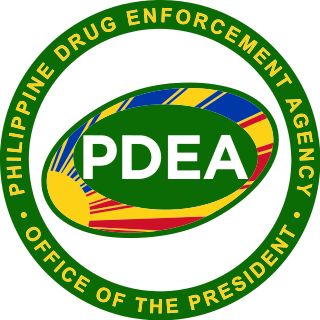
The Philippine Drug Enforcement Agency is the lead anti-drug law enforcement agency, responsible for preventing, investigating and combating any dangerous drugs, controlled precursors and essential chemicals within the Philippines. The agency is tasked with the enforcement of the penal and regulatory provisions of Republic Act No. 9165, otherwise known as the Comprehensive Dangerous Drugs Act of 2002.
Joint Interagency Task Force South is a United States multiservice, multiagency task force based at Naval Air Station Key West, Key West, Florida.

Samuel Perez Jr. is a retired rear admiral in the United States Navy.

Combined Joint Interagency Task Force 435 is a subordinate command of U.S. Forces-Afghanistan (USFOR-A) and includes U.S. service members from the Army, Navy, Marine Corps and Air Force, plus Department of Defense civilians, contractors and Coalition members. CJIATF 435 partners with the Afghan National Security Forces, the Afghan National Army Detention Operations Command, the U.S. Department of State's Division of International Narcotics and Law Enforcement, the U.S. Department of Justice, the International Security Assistance Force Joint Command and the Combined Security Transition Command-Afghanistan.
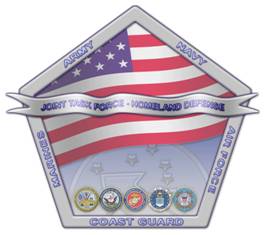
Source: JTF-HD PAO

Multijurisdictional Counterdrug Task Force Training (MCTFT) is a United States Department of Defense program managed by the National Guard that provides unique, tuition-free military and counterdrug training for local, state, federal, and military criminal justice professionals as well as awareness training for community leaders. The MCTFT program is funded by the Department of Defense and administered through the Florida National Guard, and exists to fulfill the counterdrug training needs of law enforcement personnel. Nationally responsive, the program meets the training needs of all 50 U.S. states and four U.S. territories.
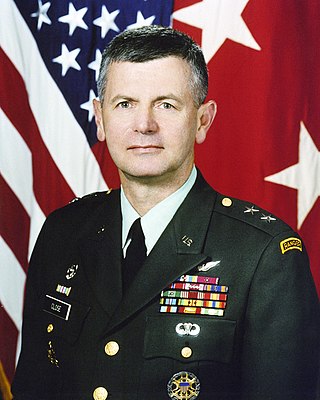
Major General George Francis Close, Jr. is a retired senior US Army officer, currently acting as a senior corporate and government executive. He has been recognized for leading and developing organizations in the US, Middle East, and in major strategic military commands.
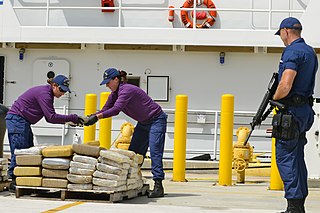
Operation Martillo is an ongoing multi-national anti-drug operation that began on 15 January 2012, and "aims to combat international drug trafficking, and promote peace, stability in Central and South America", according to the U.S. Southern Command, as one of the public institutions involved in it. It is a defense project led by the United States Southern Command with help of multi-national forces from Latin American and European countries. News coverage of their activities and results began in 2012, but mainly from defense-focused media.































